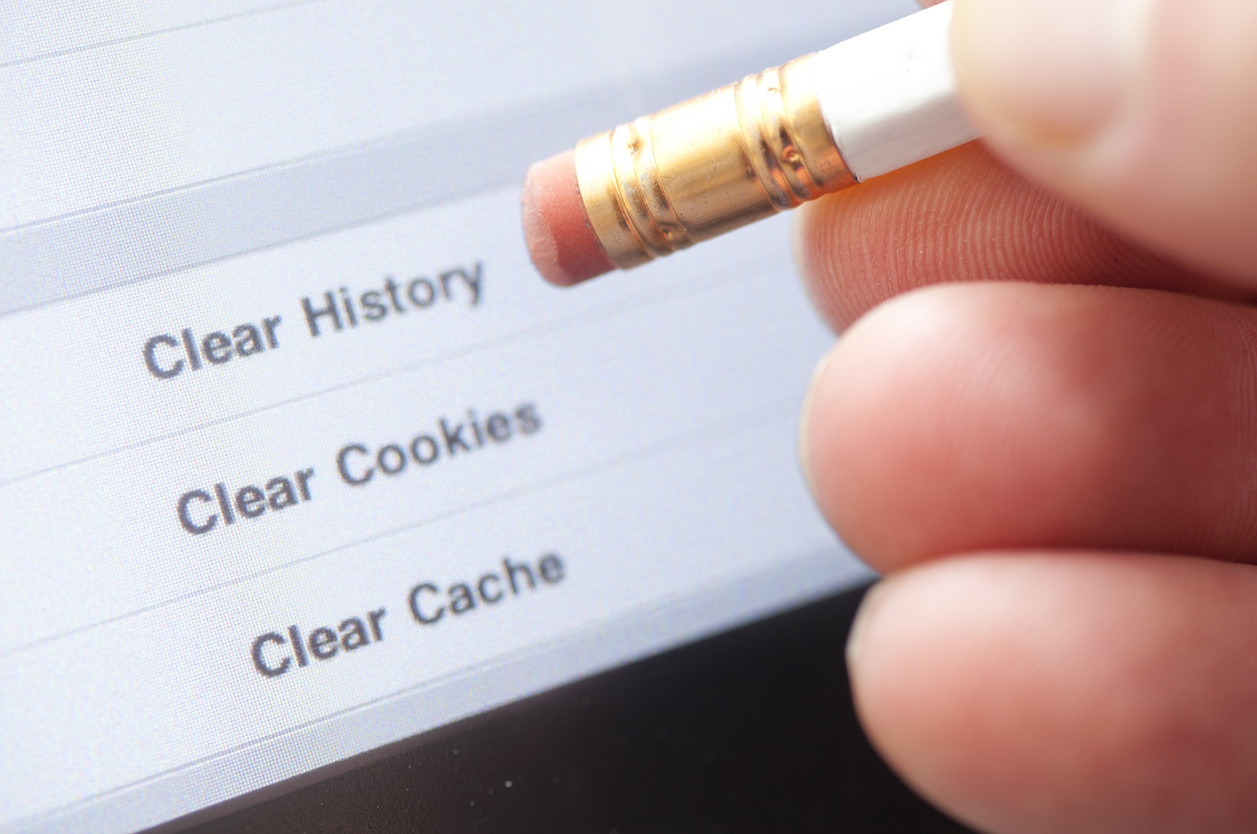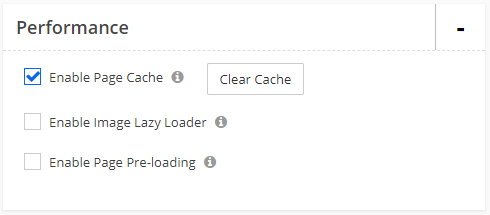
Have you ever been told to “clear your cache,” only to have no idea what that means? Whether you’re a website owner or someone who simply browses the Internet, you should be familiar with cache and how it works.
Cache helps website pages to run quickly and smoothly, but it can incidentally cause issues when things don’t load correctly. It can also get in the way of on-the-fly website editing. Whatever the situation may be, you most likely will need to know what cache is at some point – and how to clear it.
Let’s dive into the two main types of cache, website and browser cache, and learn what they are and how to clear them.
What is website cache?
Data is “cached” when it’s received and collected by a server or device. Computers use cache to store website page data and serve it to the end-user more efficiently. Let’s explain how that works.
When a visitor lands on your page for the first time, their browser requests the webpage data. That request is received and processed by the server, which then serves the webpage to the user as an HTML file in their browser. If caching is turned on, the server will store the HTML file it created in its memory. So, the next time someone visits that web page, the server will send the existing HTML file instead of creating a new one. This process makes page load times fast.
Website cache eventually empties out after a certain period of time. However, if a website’s content has changed at all and the changes need to be reflected immediately, you may want to clear the website’s cache to show the new version.
What is CDN caching?
Most websites on the internet use a CDN for their web servers. A CDN, or content delivery network, uses proxy servers to cache website page content. These servers are typically located around the globe in an effort to be closer to users than the original server, serving content faster.
When a user makes a request to see a web page, the content is fetched by the CDN. Then, the CDN will serve that user the content and cache it for any future users. This makes page load times even faster.
How do you clear your Shift4Shop’s website cache?
Shift4Shop doesn’t cache your entire website, so not every change will need a clear cache to be reflected. This is because Shift4Shop pages are dynamically generated via ASP, or active server page scripting. So, when a page is requested from the server, it’s rendered at that given time.
However, some aspects of your website, like frame areas and menu links, are saved in cache memory. Because they have static elements that aren’t changed as frequently, caching these parts of your website only serves to improve page load times.
If you do make changes to those aspects of your site, they may not reflect immediately because the previous version of the page is still cached. Website cache for Shift4Shop stores automatically clears after 2 hours, but you can manually clear your cache to show changes immediately. Here’s how you can do that.
- Navigate to Settings > General > Store Settings.
- Click on the General tab.
- Under the Performance section, find the checkbox for “Enable Page Cache.”
- Click the “Clear cache” button next to that to clear your store’s cache.

Additionally, any time you click on the “View Store” button at the top of your Online Store Manager, you are effectively clearing your store’s cache to view changes in real-time.
What is browser cache?
Rather than being stored on the server side of things, browser cache is stored on the end-user’s side. Every time a user loads a website page, their browser downloads the page’s data to show it. Just like website servers, browsers cache most content on a page to shorten load times. So, the next time that user loads the page, most of the content is ready to go without needing to download additional data.
Browsers also automatically clear cache until their cache is full or their “time to live,” or TTL, expires. But, users can also clear their browser cache at any time.
A user may need to clear their browser cache if an element on the page loaded incorrectly the first time it was cached. By clearing the cache and reloading the page, that new version should display correctly. This is why the first step in most troubleshooting for a website is to clear your browser’s cache.
How do you clear your browser cache?
If a website has been updated, or if you’re having trouble using a website, clearing your browser cache should be the first step to solving a problem. Luckily, clearing your browser cache is easy to do on any browser.
However, if you’re unfamiliar with your browser’s settings, you may find it complicated to do. So, we’ve broken down exactly how to clear your cache on some of the most popular browsers. Because each browser is different, they each require a different set of steps to clear cache. For the purposes of this blog, we’ll show you how to clear your cache in Microsoft Windows (aside from Safari). Let’s get started.
How to Clear Google Chrome Browser Cache
Google Chrome is the most popular internet browser in the world, which is why it’s first on this list. It’s available on Microsoft Windows, Linux, macOS, iOS, and Android. To clear your cache on Google Chrome, follow these steps.
- Open up the browser’s menu by clicking the three dots in the top right corner of the window.
- Click on “Settings” to be taken to Google Chrome’s settings.
- Scroll down to “Privacy and Security.”
- Click on “Clear browsing data.”
- In Basic settings, select your time range – we recommend “All time.” Advanced settings allow you to get more granular with what you’re clearing, but that won’t be necessary for clearing your cache.
- Check “Cached images and files” and nothing else to clear just your cache. If you clear cookies and other site data, you may be signed out of most sites. Clearing browsing history will remove all historical browsing data from Google Chrome.
- Click the “Clear data” button and your cache is cleared!
How to Clear Internet Explorer Browser Cache
Microsoft is phasing out Internet Explorer, instead promoting the use of their new browser Microsoft Edge. However, users with older systems may still be using the browser, which is why we’ve included cache clearing instructions for them as well. Here’s how to clear your browser cache in Internet Explorer 11.
- Click on the gear icon in the top right of the browser window.
- Select “Internet options.”
- Find the “Browsing history” section and click the “Delete…” button.
- Uncheck all items aside from the “Temporary Internet files and website files” box.
- Click the “Delete” button to clear your Internet Explorer cache.
How to Clear Microsoft Edge Browser Cache
Built into all new Windows PCs and built on Chromium, Microsoft Edge is the modern successor to Internet Explorer. Here’s how to clear your cache on Microsoft Edge.
- Click the three dots in the top right corner of the window to open the browser menu.
- Select “Settings” to open up Microsoft Edge’s settings.
- Click on “Privacy, search, and services.”
- Scroll down to “Clear browsing data” and click on the “Choose what to clear” button.
- Change the time range to “All time” and uncheck all options but “cached images and files” to only delete your cache.
- Click the “Clear now” button and you’re good to go.
How to Clear Firefox Browser Cache
As an open-source browser, Firefox is a popular alternative to Google Chrome and other Chromium-based browsers. Follow these steps to delete your browser cache in Firefox.
- Click on the hamburger menu at the top right of the browser. It should look like three horizontal lines.
- Select “Options” to be taken to Firefox’s settings.
- Click on “Privacy & Security” and scroll down to the “Cookies and site data” section.
- Under “Cookies and site data,” click on the “Clear data…” button.
- Uncheck “cookies and site data” and click the “Clear” button.
How to Clear Safari Browser Cache
As macOS’s built-in web browser, Safari is popular among Mac users. Because macOS is different than Windows, the approach to clearing cache for Safari is a bit different from the browsers we’ve looked at so far.
There are two ways to clear your cache in Safari. One method will clear both your cache and cookies, while the other will only clear your cache. We’ll go through both so that you understand both options.
To clear cache and cookies on Safari:
- Select the Safari button at the top left corner of the menu.
- Click on “Preferences…”
- Select the “Privacy” tab.
- Click the “Manage Website Data” button, which will load website data and display a list of websites to clear data on.
- Select the sites you want to remove cache for, or select “Remove All.”
- Click “Done” and your cache and cookies will be cleared.
To only clear cache on Safari:
- Select the Safari button at the top left corner of the menu.
- Click on “Preferences…”
- Select the “Advanced” tab.
- Check the box next to “Show Develop menu in menu bar.”
- Now, go back to the menu bar at the top of the screen and select “Develop.”
- Select “Empty Caches” to clear all cache.
Conclusion
Caching is an important part of the Internet, making browsing and content delivery more efficient and less time-consuming. However, while cache does perform a vital task, they may come many times that you’ll need it to be cleared.
As a site owner, you may be making updates to your live site that should be available in real-time. If you’re making changes regarding a limited-time sale or the stock of a high-demand product, time is of the essence. During times like those, there’s no way that you can wait the typical cache clear time. That’s why eCommerce platforms like Shift4Shop make it quick and easy to clear cache on your own.
Alternatively, if you’re someone browsing the internet, cache can cause problems for you as well. If you’ve previously visited a website that has now made a change, you’ll need to clear your cache in order to see that change. Or, if a page isn’t loading properly, a clear cache can be the easy solution.
Whatever your reason may be, clearing your cache is something that anyone needs to know how to do if they use a computer.





Leave a reply or comment below